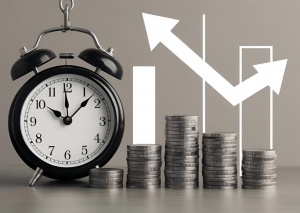Even if you have a heap of student loan debt to repay, the procedure does not have to be difficult. You will be in a better position to pay off your student loans sooner than expected if you have the proper strategy, along with making some adjustments to your spending patterns. Student loan management might be daunting, but there are strategies to make it easier to remain on top of payments. You should arrange information like your student loan type, crucial dates, repayment plan, and methods to monitor your progress on payments so that you can easily remain on top of them.

Understand the Full Scope of Your Debt
It is critical to ascertain your actual debt before drafting a repayment plan. Evaluate your loan options, interest rates, and conditions of payback. You may determine the best course of action by being aware of the distinctions between the regulations governing federal and private loans. List all of your loans along with their balances, interest rates, and minimum payments. This will assist you in determining where to concentrate your efforts and provide you with a comprehensive picture of your debt. To make wise financial decisions, you must first educate yourself.
Track Progress and Stay in Communication
Following the creation of a payment plan, it is crucial to monitor your progress to keep on top of your payback. Monitoring your loan amount and payment history will help you identify any possible irregularities and gauge your progress. Furthermore, keep in contact with your loan servicer so they can inform you of any problems with your payments and give you account updates. You can achieve being cautious with your loan and never being caught off guard by maintaining a constant line of contact with your servicer.
Choose the Right Repayment Method
The objective of the Snowball Method is to keep you encouraged and on track by paying off the lowest debt first, irrespective of the interest rate. For immediate gains and increasing motivation to take up more challenging tasks, this approach is ideal. By gradually lowering interest rates, the Avalanche Method saves more money by focusing on the loan with the highest interest rate first.
Significant long-term financial gains may result, even if it can take longer to realise results as soon as possible. Incorporate additional payments toward the principal balance of your loan whenever you can, such as with bonuses, tax returns, or side income, to optimise the effect on your loan balance.
Making additional instalments might greatly shorten your student loan repayment period. Each additional payment lowers the main debt, which lowers the interest that the lender charges. Even moderate additional payments can significantly impact your debt over time.
Make the Most of Extra Funds
If you have extra money, such as overtime or freelancing earnings, think about applying it directly to your loans. Use this opportunity to indicate that you would like to allocate the additional money to the principal amount. This method helps you pay off your debts more quickly and lowers the overall amount of interest you will pay.

Use any unexpected funds, such as a tax refund, bonus, or gift, to settle your student loan balance. Even though you may feel inclined to spend and buy with these extra funds, incorporating the windfalls will speed up the process of paying off your debt.
Automate Payments to Stay on Track
Keeping track of many deadlines and payment amounts might be difficult. Delays or missed payments resulting from any disarray might harm your credit score and make future financial decisions more difficult. You may avoid this by setting up autopay. We assure you that you will never have to worry about late penalties and that we will pay your invoices on schedule. Making payments automatically also lowers the possibility of missing deadlines, which might result in late penalties or lower your credit score. Automating your payments makes maintaining a regular repayment plan easier, which emphasises the need for consistency.
Apply Extra Payments Strategically
Your student loan instalments pay off your principal, interest, and any other fees each month. However, the majority of your first loan payments cover interest and fees; very little reduces the principal amount.
Nevertheless, the system calculates interest using the existing principal. Therefore, if you lower the principal, you also lower the total amount you must return since less interest will accrue. You may pay back your loans more quickly as a result.
You can submit more than your minimum payment to do that. Even a small quantity has an impact. However, you should not simply transfer the money. Your money is immediately applied to the loan with the highest interest rate after accumulated interest. Therefore, clarify to them how you would like your money to be used if you wish to be strategic about how you repay your debts.

You can accomplish that by specifying on the website of your service provider how you would like to use your extra funds. For instance, you can instruct your servicer to put any additional funds toward the highest-rate loan’s principal first. However, make sure the loan servicer handles the funds accurately by checking later. If you notice something is off, get in touch with customer care. As it happens, you are paying off more of your principal than the interest and fees as the amount shifts near the completion of the loan.
Consider Forgiveness and Consolidation Programs
Though they might be a significant financial burden, student debts are not something you should bear alone. There are many different ways to pay back your student loans, depending on the kind of financing you utilise. When many loans are consolidated into one, your monthly payments are collected by a single lender. Consolidating student loans is a simple method for borrowers with several payment plans at various interest rates to streamline the repayment process.
Your debt consolidation strategy may vary depending on whether you have federal or private student loans. Certain occupations, such as teaching or public service, are eligible for loan forgiveness under certain government programs. Find out whether any of these programs are appropriate for you. Also, find out whether your company offers help with student debt payments. Your payload can be greatly reduced by taking advantage of these possibilities.




